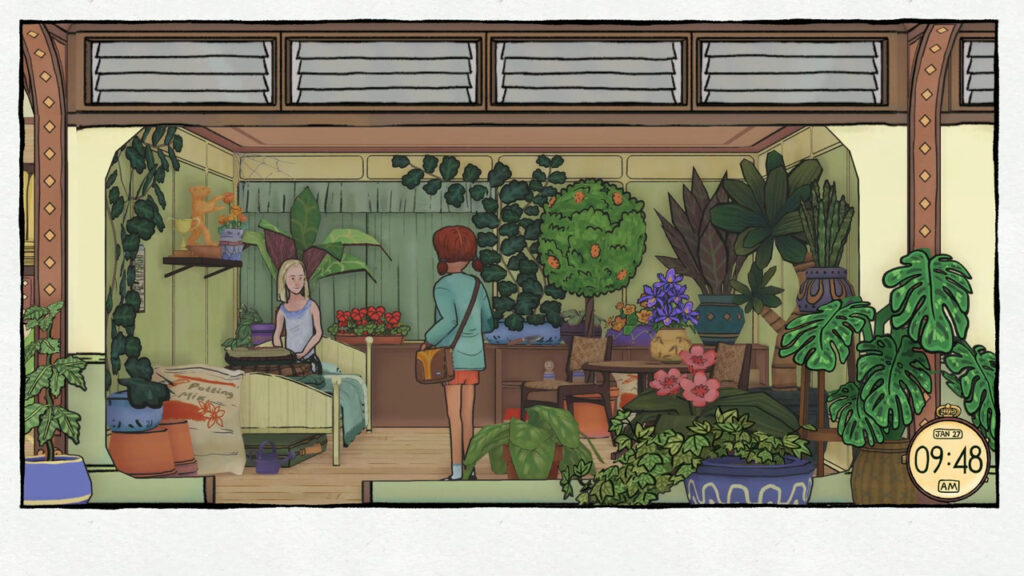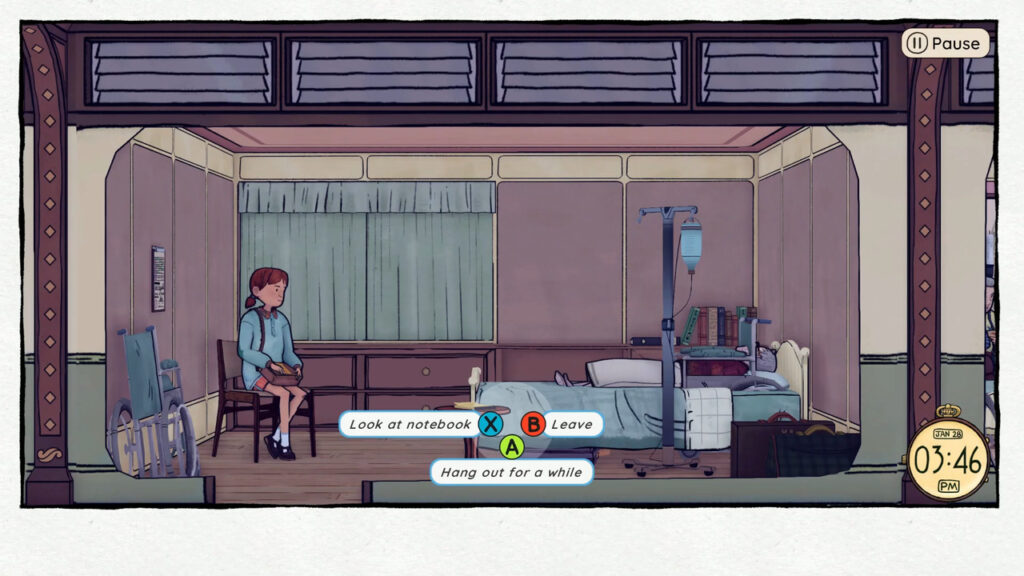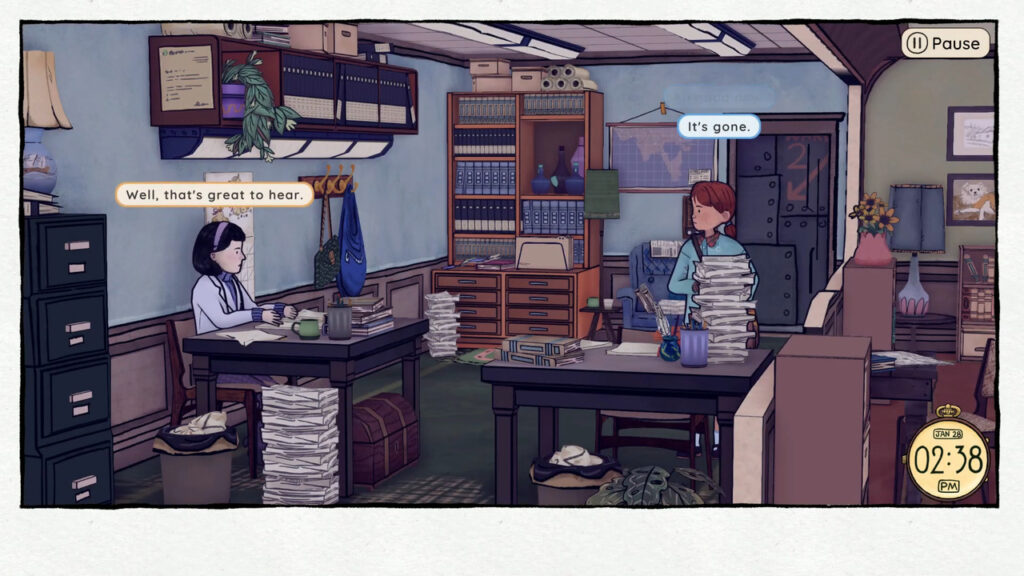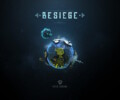
Developer: Ghost Pattern
Publisher: Ghost Pattern
Platform: Switch, PS4, PS5, PC, Xbox One, Xbox Series X|S
Tested on: Switch
Wayward Strand – Review
It doesn’t happen often but occasionally, you run into a title that transcends the idea of what a video game is supposed to be. Such is the case with Wayward Strand, a game that feels like an esoteric escapade that is incredibly difficult to describe without experiencing it for yourself. It’s unique and immersive, and it is designed to make you question the human condition. We fully realize that we cannot capture the feeling of playing Wayward Strand in a simple review, but we sure as hell are going to try. Read on to find out why a game about the residents of a retirement home is definitely a title worth looking into, even if that idea doesn’t sound appealing at first glance.
Story
Set in 1978, in perhaps the most unusual retirement home ever, Wayward Strand tells the story of Casey Beaumaris, a 14-year-old girl who is the daughter of said retirement home’s head nurse. What’s so unusual about the home, you ask? Well, it’s located on the inside of an antique airship. This unique location is the background to perhaps the most wholesome narrative we’ve encountered this year, and given that we’ve reviewed Lost in Play, that’s saying something. But before we get ahead of ourselves, let’s recap the game’s narrative without giving away any spoilers. In Wayward Strand, Casey is spending a weekend at the home/airship, entertaining the patients as the staff is preparing for an important event. It’s a task that’s right up her alley: as a journalist-to-be, she’s always on the lookout for stories, and naturally, the residents of the home have plenty of those to share. It’s these stories that are the main driving force behind Wayward Strand. Now, if the idea of a game entirely built around talking to the elderly already makes you groan, then Wayward Strand isn’t going to be your cup of tea, but if you give the game a chance to convince you of its merit, you’ll find one of the most cleverly written and endearing games out there.
We won’t delve into the individual stories of the patients, because that would definitely take us into spoiler territory, but rest assured, you will grow attached to the cast. If you’ve played Later Daters, then you might already have somewhat of an idea of what to expect, although Wayward Strand’s cast feels a little less over the top and way more realistic. Casey’s investigative work isn’t just limited to the stories of the residents either -she can also spend time finding out more about the airship or the staff. It’s up to the player to choose which direction Casey takes her journalistic career as she aims to write an article about the weekend. Of course, the game touches upon darker subjects as well, despite the lighthearted atmosphere: themes like aging and death are pretty much unavoidable given Wayward Strand’s subject matter, but we felt like the game handled these with the right amount of respect without going too dark.
Graphics
We don’t typically associate retirement homes with a wide variety of colors and cutesy visuals, but that’s exactly the direction that developer Ghost Pattern went for with Wayward Strand, and it works amazingly well. It’s refreshing to see this take and it really helps with giving the game a wholesome feeling. There is a storybook-like quality to the art direction, although we were at times also reminded of the aesthetics of Wes Anderson’s films. The storybook effect is enhanced by the game having a white border around it at any given time, as if it’s a moving illustration on a piece of paper. The way the airship is portrayed with cutaway rooms, in particular, is unavoidably reminiscent of the depiction of The Belafonte, the ship from The Life Aquatic with Steve Zissou. Art direction aside, we did run into visual glitches, with items duplicating on screen, teleporting to places where they shouldn’t be, or disappearing entirely. This didn’t affect the gameplay in the slightest but it was a bit irksome and confusing at times.
Sound
Front and center in Wayward Strand’s soundscape is the voice acting, which is fantastic. The cast does a great job at bringing their characters to life, which shouldn’t be surprising as the thirteen voice actors all have experience in film, tv, and video games. Granted, names like Nancy Curtis or Peter Paltros aren’t household names in Europe or the US, but from what we can gather online, they’re quite famous in their homestead of Australia. Additionally, a beautiful and melancholic score further adds layers of emotions to some of the stories and adds a cinematic quality and atmosphere to other parts.
Gameplay
We are honestly not entirely sure which genre we should put Wayward Strand in. Is it a visual novel? A point-and-click adventure? A puzzle game? The game definitely incorporates elements from all of these genres but the end result is something that feels very much like a unique experience. Casey’s ultimate goal is of course to write the most interesting article possible, and this involves walking around the home, talking to patients to gather info, then moving to other ones relevant to the story that she just heard, and continuing from there. There are several storylines to uncover and depending on which questions you ask staff and patients, they’ll unfold in different ways, which bodes well for replay value. This is especially true since you can’t see everything in a single playthrough, as your time in the home is limited to a single weekend. What’s interesting here is that the events that are supposed to happen, do so in “real-time” whether Casey interacts with staff and residents or not.
This actually ties into playing the game multiple times since specific events are fixed in time, and thus you’ll gradually start to understand the flow of time on the ship and are able to act accordingly. There are times when you’ll need to follow a character around or eavesdrop on a conversation, so it’s a tremendous help when you can estimate where and when you’ll need to be to gather the required information. At first glance, it may seem like there isn’t a whole lot of depth to Wayward Strand’s gameplay as a result, but if you peel back the layers through multiple playthroughs, you’ll start to see how subtle and ingenious some of the mechanics are incorporated. It’s both Wayward Strand’s biggest strength and its greatest weakness: this is a game that requires multiple playthroughs to really shine. However, it’s also more about the journey than the destination, and the ending feels rather underwhelming as a direct result of this. The game does very little to convince the player to return after the credits roll for the first time, and it’s up to the player to take the initiative to start a new run. Only when that happens, everything clicks, and Wayward Strand becomes something unique and memorable.
Conclusion
Wayward Strand definitely isn’t for everyone, and even if you’re right in the middle of the game’s target audience, it will require some effort from your own part before the game shows its true colors. This is a game that deserves every chance but it is going to face difficulty in convincing people to pick it up, because it’s a slow burn with a concept that definitely isn’t going to appeal to most people. Make it past that first run however, and the game unfolds into one of the most wholesome and endearing experiences that you’ll find in the video game industry.
Wayward Strand - Review,








No Comments